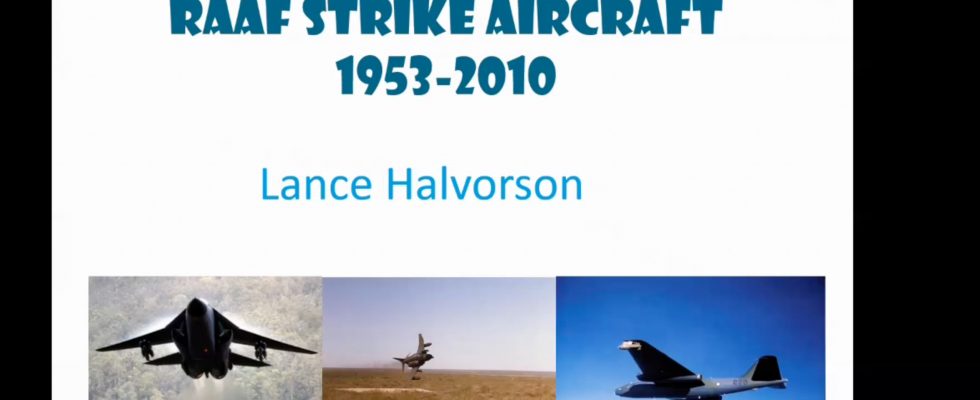Our Melbourne monthly meeting on 24 November 2021, in collaboration with the Friends of Air Force History and Heritage, was held in person at the Air Force Association in Hawthorn and also “broadcast” to interstate members via Zoom. Wing Commander Lance Halvorson (Retd), MBE gave a presentation titled “RAAF Strike Aircraft 1953 to 2010” covering the operation of the Canberra, F-4E Phantom and F-111 in the strike role. He covers his first-hand experiences with these aircraft.
You may view a recording of the presentation by clicking the video player below:
From 1953 until 2010, the RAAF operated the Canberra, F-4E Phantom and the F-111 in the strike role. The term strike role was not applied to RAAF air operations until the F-111 program, starting in 1968.
From the introduction of the Canberra aircraft into the RAAF in 1953, crews conducted long and short range training on simulated targets ranging from airfields, parked aircraft, POL storage, power stations and rail facilities. Training then changed to Hi-Lo-Hi missions where crews flew a radar profile descent, descending outside the radar coverage of ‘enemy radars’, to low level for an attack on likely targets. When in Vietnam, the Canberra was employed in SkySpot radar bombing from 22,000ft and close air support, low level bombing from 3-4000ft in support of ground troops. The Canberra filled a USAF gap in combat aircraft in Vietnam.
The F-4E Phantom was a proven system in weapons delivery. Although designed as a USN interceptor, it proved itself as an effective ground attack aircraft and was the mainstay of the USAF in attacking targets in South and North Vietnam. The RAAF employed the F-4E as a ground attack aircraft in Australia, although some air-air intercept training was carried out. It was an interim aircraft for the RAAF.
The F-111 was designed as a low level strike aircraft and operated in the land and maritime strike roles. The F-111 radar was equipped with a ground mapping radar although it had an air intercept capability, air-toair attack was not a role. Following fitment of precision guided munitions (PGMs), the F-111 achieved an outstanding strike effectiveness in Vietnam, Iraq and Libya with the USAF.

